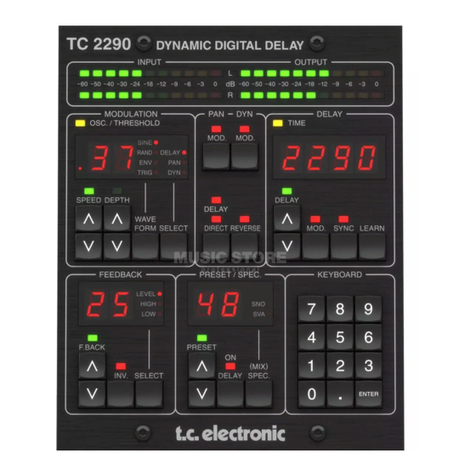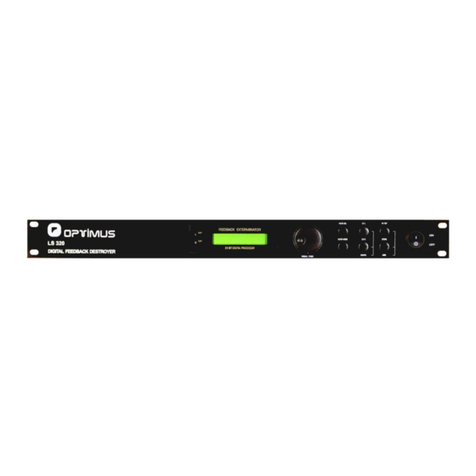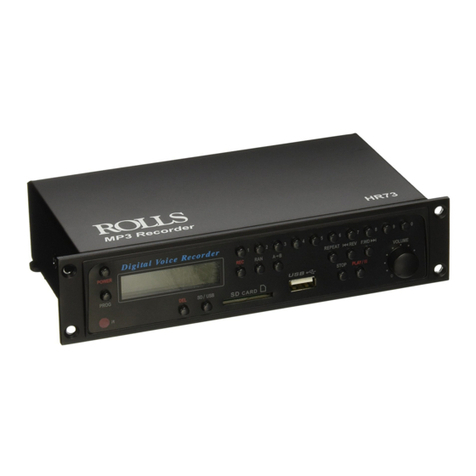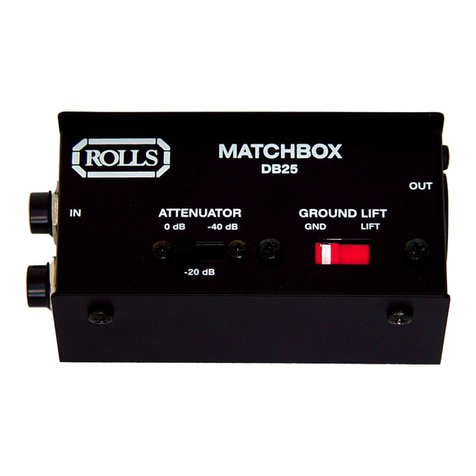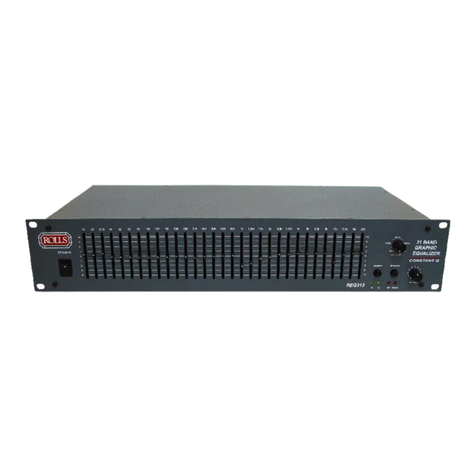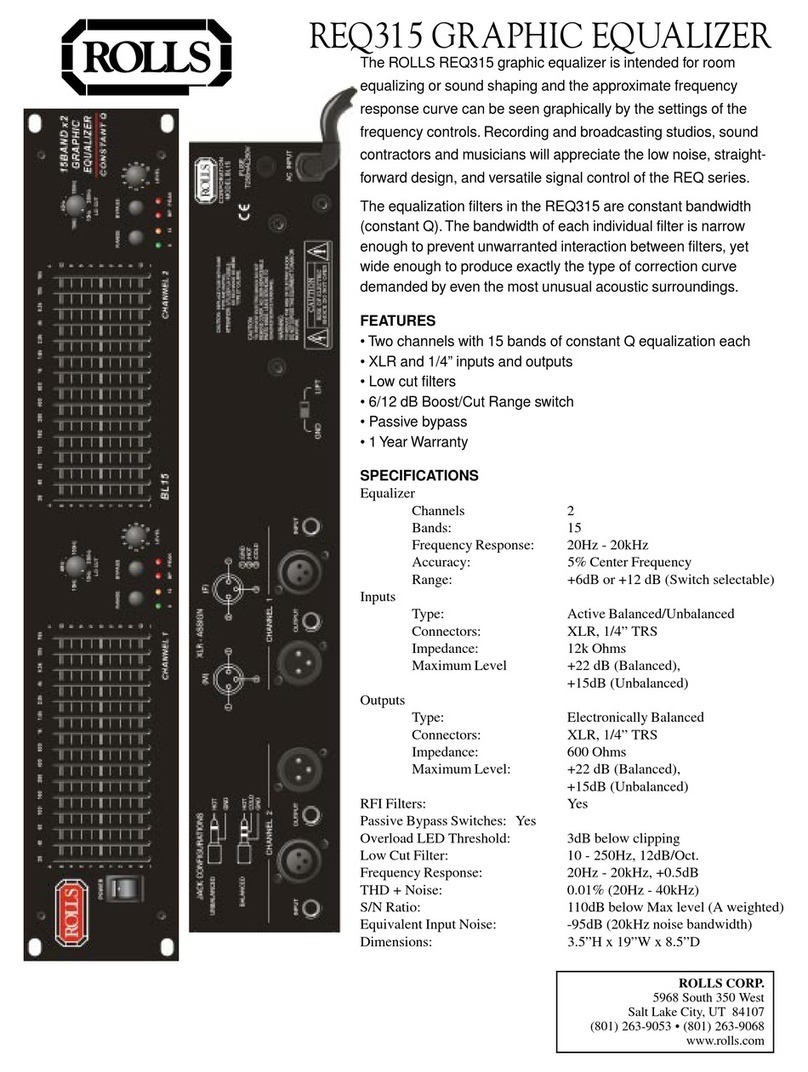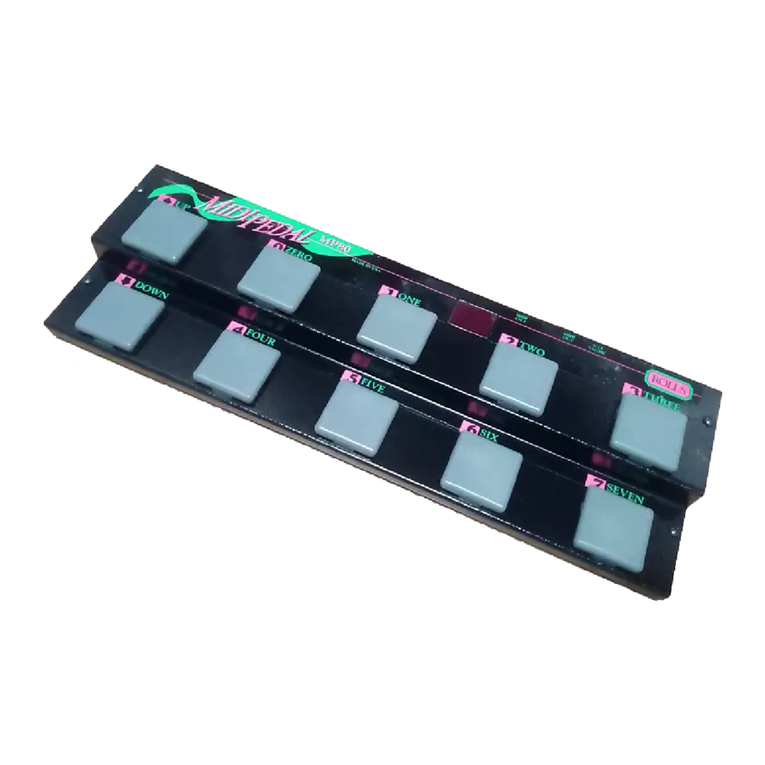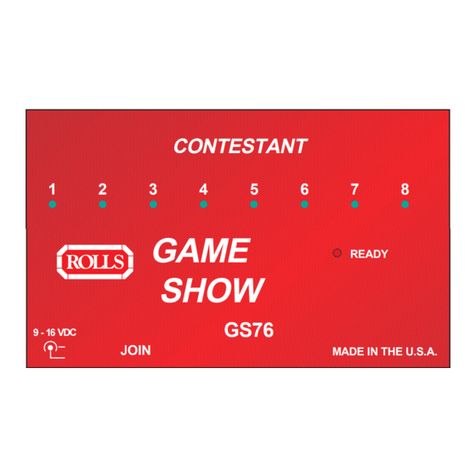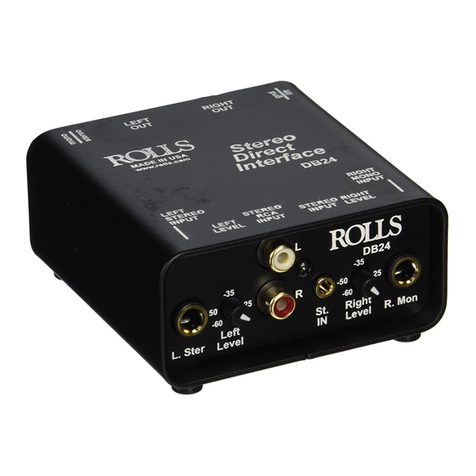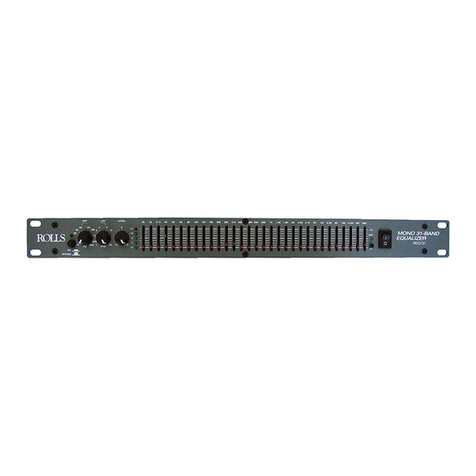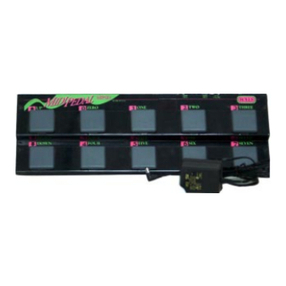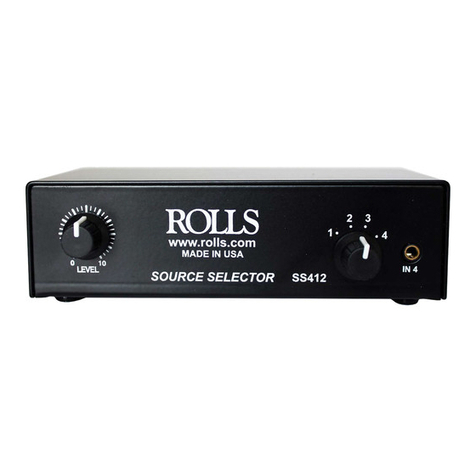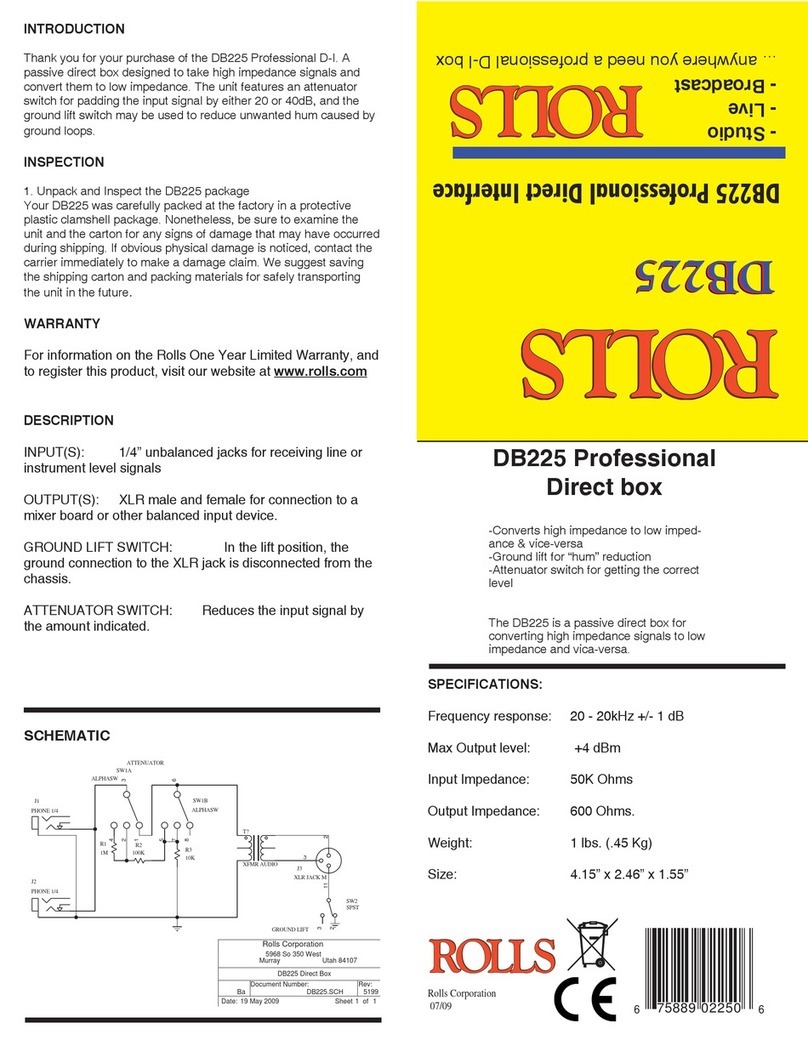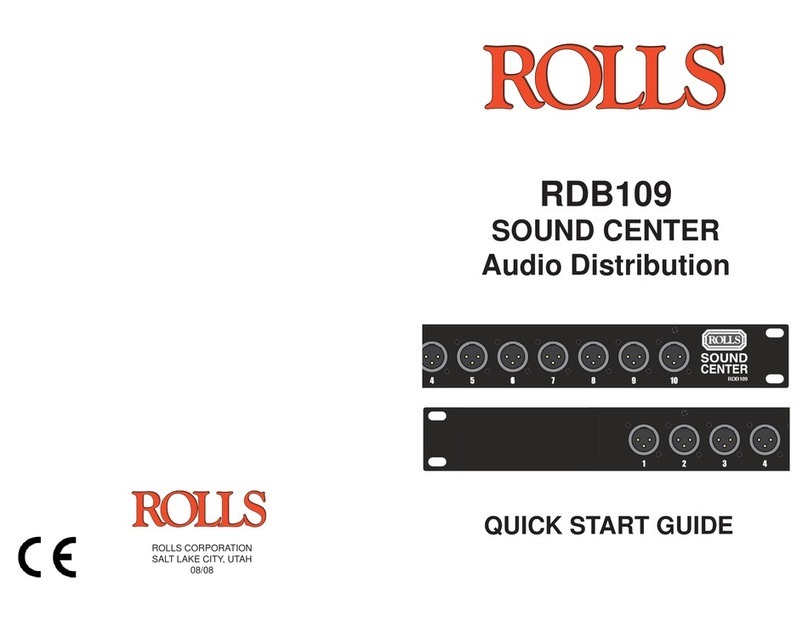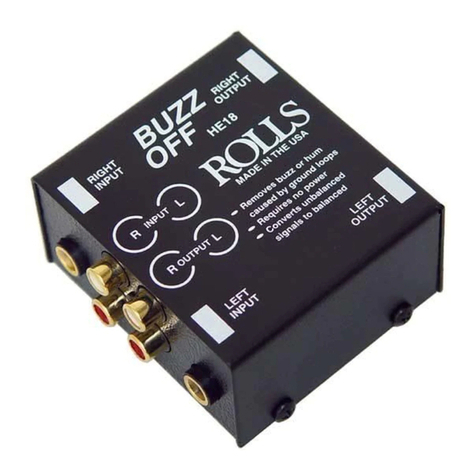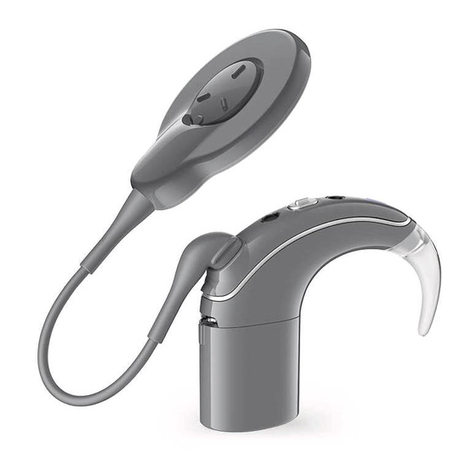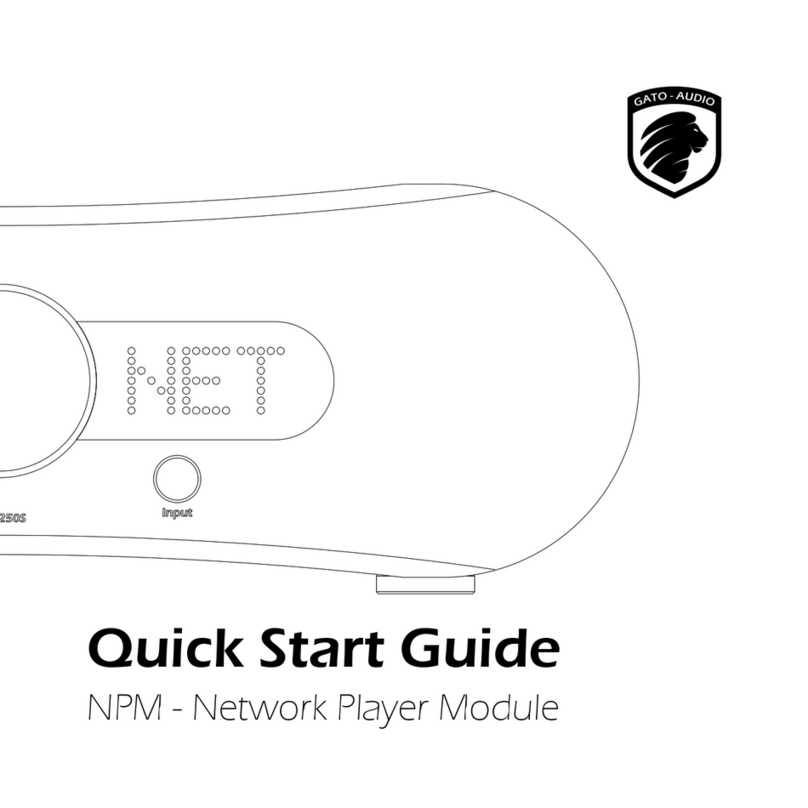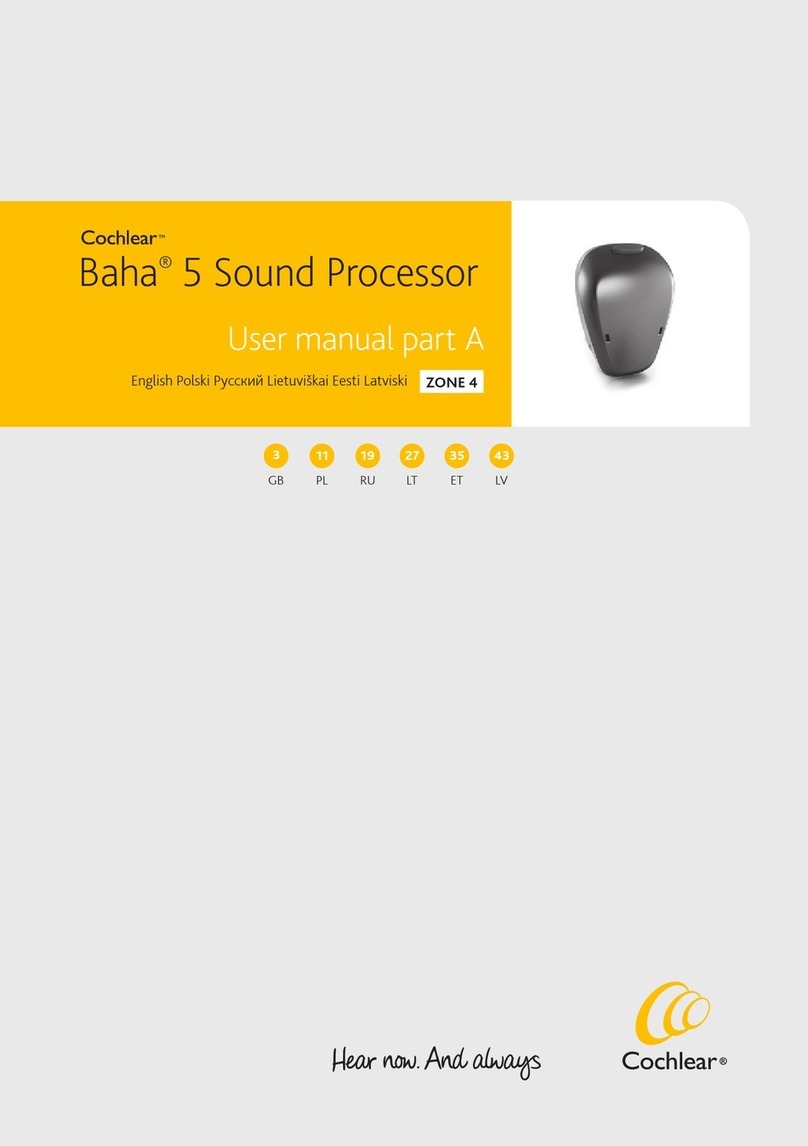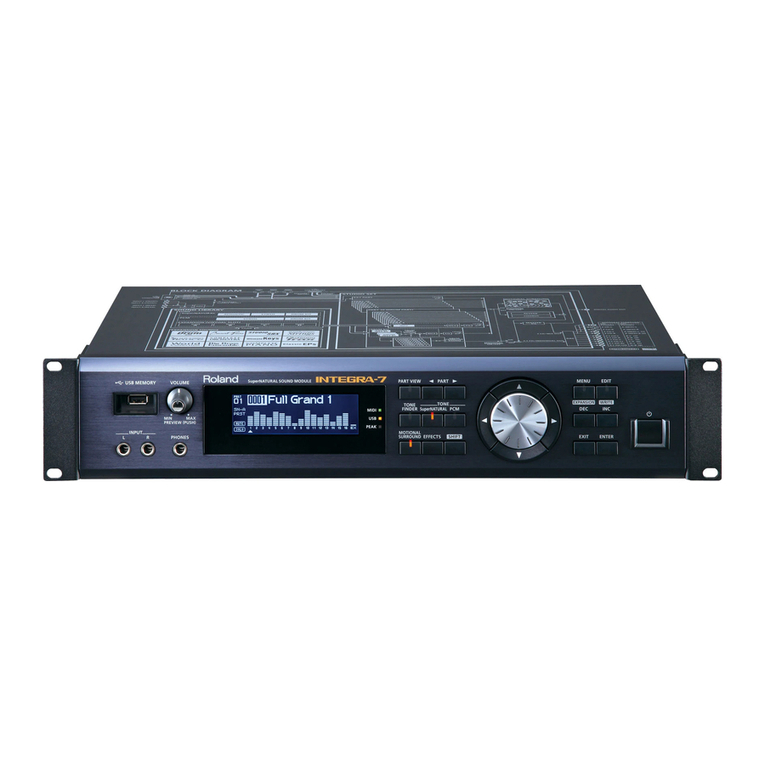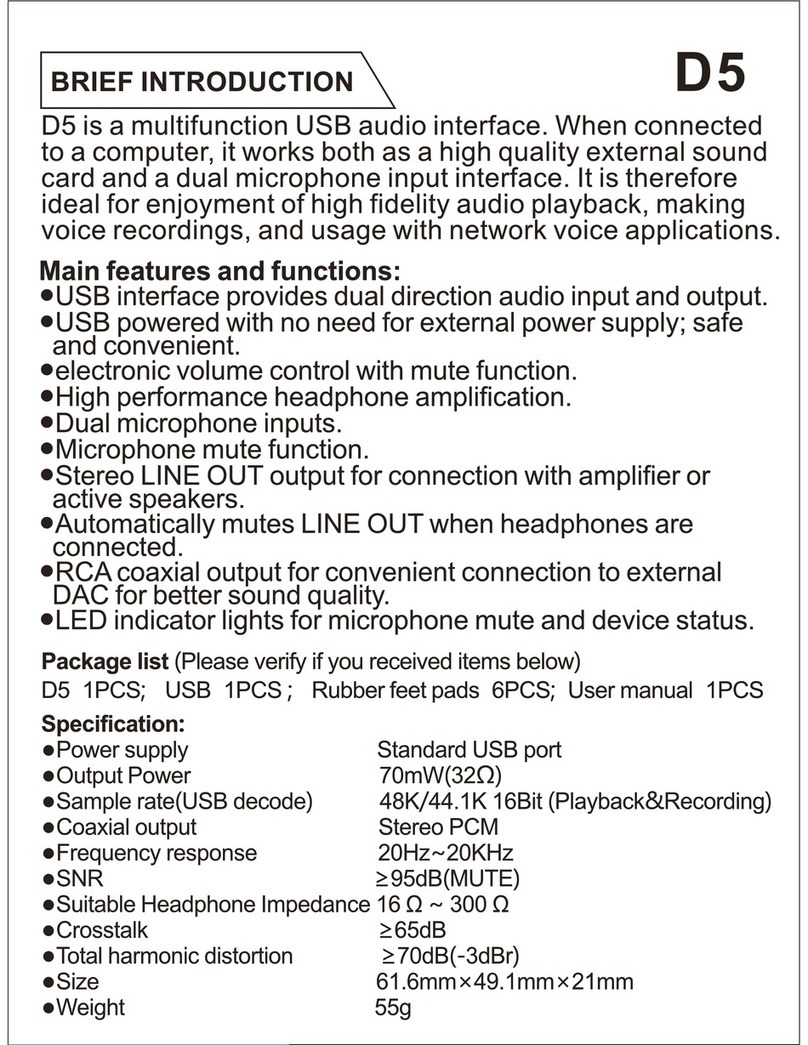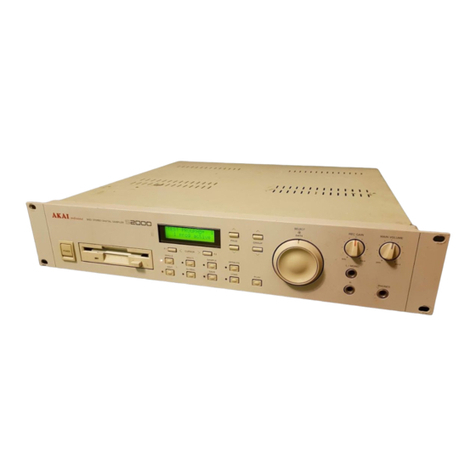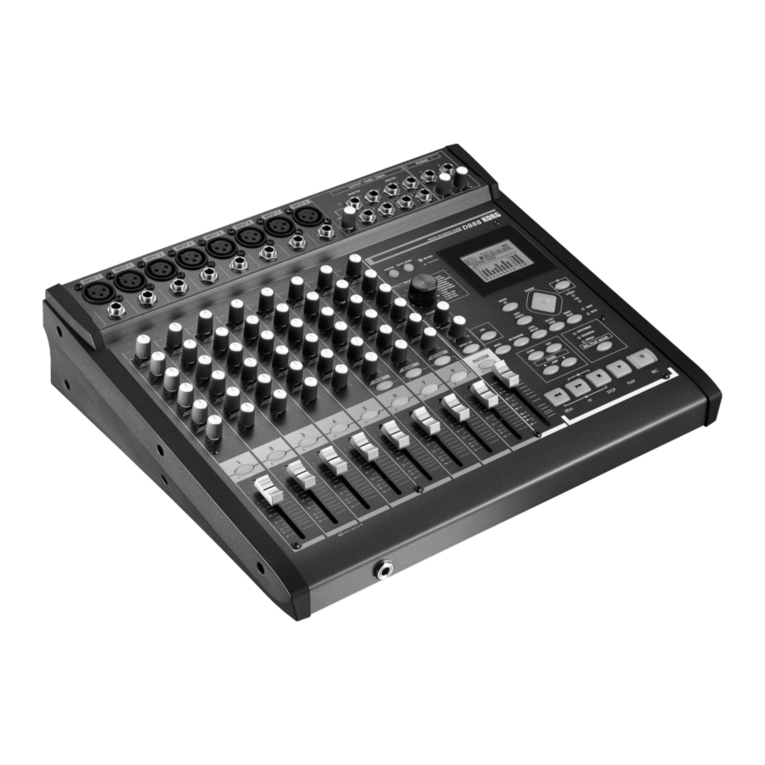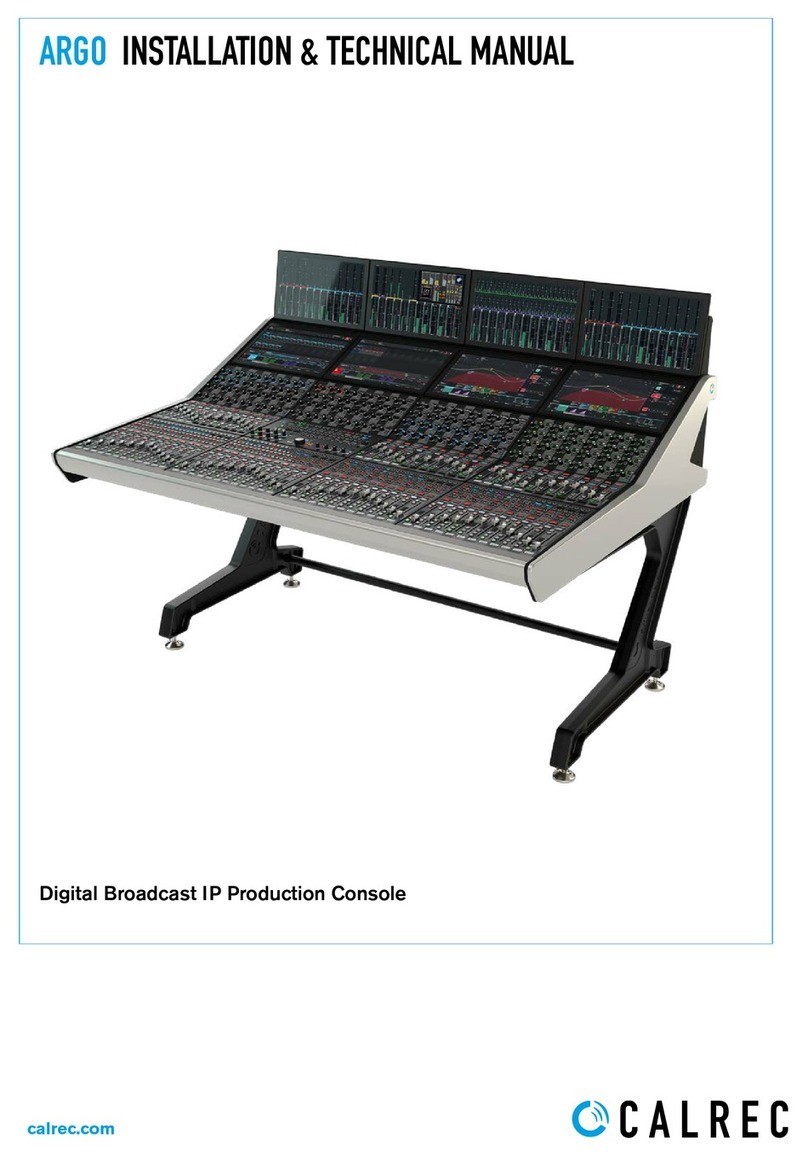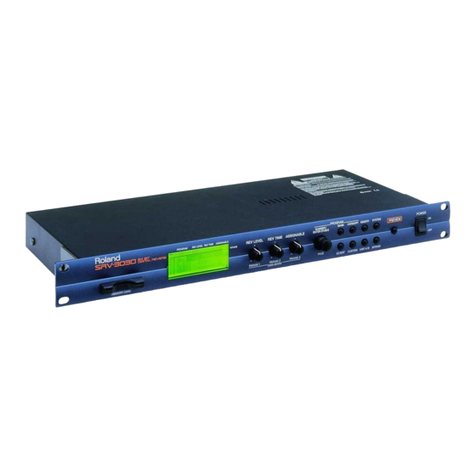
FRONT PANEL DESCRIPTION REAR PANEL DESCRIPTION
CLIP LED: Indicates that the amount of signal is above a normal operat-
ing level.
LEVEL: Adjusts the amount of input signal.
DELAY TIME KNOB: Sets the delay time from 32ms to 360ms.
PWR: Indicates that the HRD342 has power.
PLEASE NOTE: THIS MANUAL ASSUMES THE USER HAS A WORKING
KNOWLEDGE OF BASIC AUDIO CONNECTION AND OPERATION
PRINCIPLES.
The HRD342 Digital Delay is used for speaker distance delay.
- RCA input and output: RCA line level.
- XLR output: Balanced line level output.
- XLR input: Balanced line level input.
- VDC: For connection to the supplied Rolls PS27s adapter.
Description
The Rolls HRD342 is intended for low cost, simple, time alignment of
speakers in larger rooms or outdoors. The delay dial is shown in milli-
seconds to make setup easy. The 32 to 360 ms shown on the dial will
correlate to roughly the same in feet (32 ms = 32 ft). The Rolls HRD342 is
inserted between the main console output and the ampliers supplying
the delayed speaker signal.
Setting the delay time
In a large space with a complicated layout, making a speaker design
for even sound is challenging. These venues require the use of delay
speakers to ensure high quality sound for all listeners. A big challenge
is where to place them, and the next design problem is that the speak-
ers are properly delayed. The sign of a job well done is when audience
members complain the speakers are not working.
One of the underlying principles of all speaker system designs is an
eect discovered in 1949 by Helmut Has, in which whatever source of
sound listeners hear rst will be the one that catches their attention.
This means that for an acoustically pleasant experience, audiences
should hear sound coming from the stage before they hear it in a delay
speaker.
To ensure this is the case, many sound designers set delay speakers as
far as 15 or 30 milliseconds behind. However, in a well-calibrated design,
just one or two milliseconds of delay time can be enough, as this design
will make the speakers invisible. A common rule of thumb is 1 foot = ap-
prox. 1 millisecond
